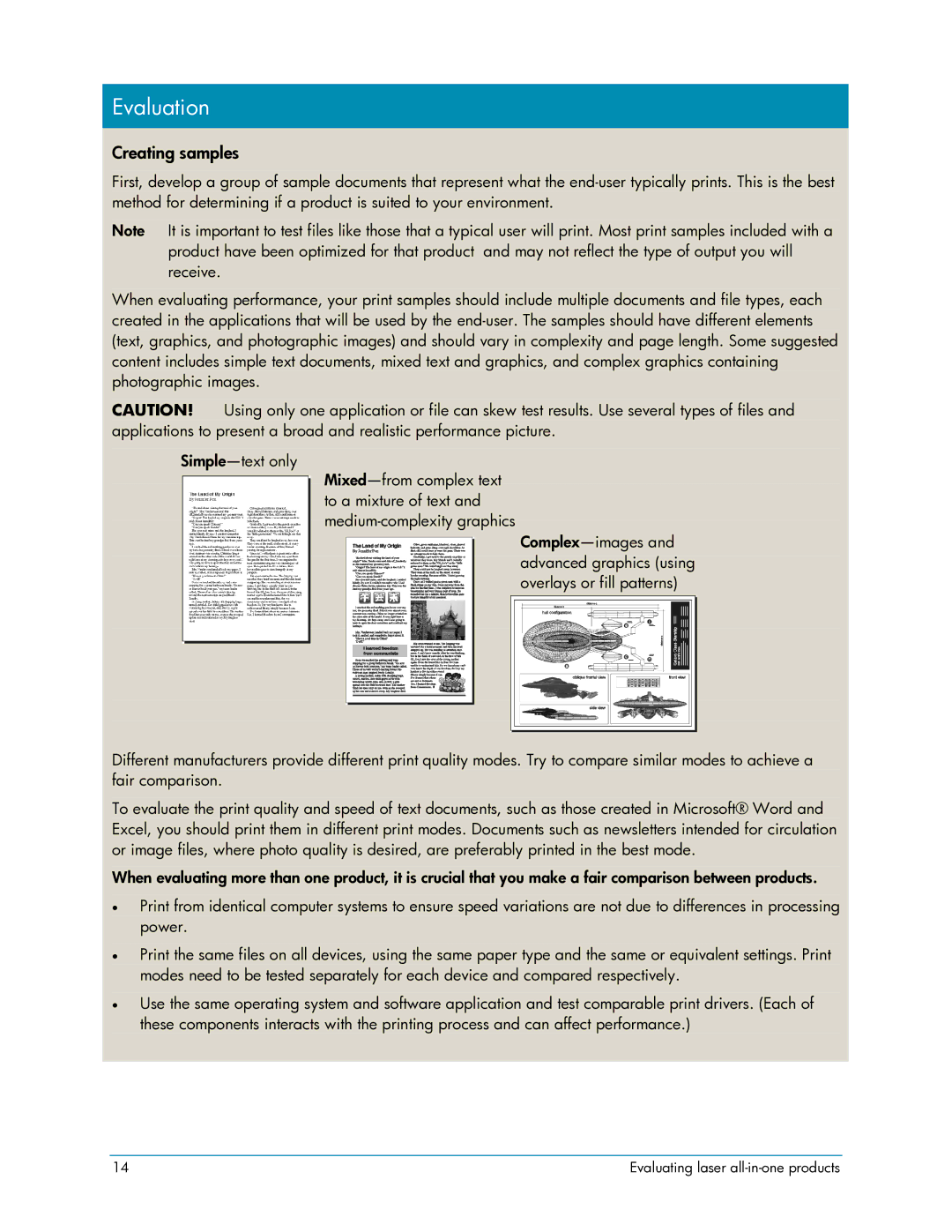
Evaluation
Creating samples
First, develop a group of sample documents that represent what the
Note It is important to test files like those that a typical user will print. Most print samples included with a product have been optimized for that product and may not reflect the type of output you will receive.
When evaluating performance, your print samples should include multiple documents and file types, each created in the applications that will be used by the
CAUTION! Using only one application or file can skew test results. Use several types of files and applications to present a broad and realistic performance picture.
Different manufacturers provide different print quality modes. Try to compare similar modes to achieve a fair comparison.
To evaluate the print quality and speed of text documents, such as those created in Microsoft® Word and Excel, you should print them in different print modes. Documents such as newsletters intended for circulation or image files, where photo quality is desired, are preferably printed in the best mode.
When evaluating more than one product, it is crucial that you make a fair comparison between products.
•Print from identical computer systems to ensure speed variations are not due to differences in processing power.
•Print the same files on all devices, using the same paper type and the same or equivalent settings. Print modes need to be tested separately for each device and compared respectively.
•Use the same operating system and software application and test comparable print drivers. (Each of these components interacts with the printing process and can affect performance.)
14 | Evaluating laser |
